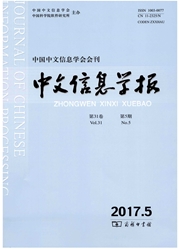

 中文摘要:
中文摘要:
预防维修是提高运行可靠性的重要措施.在周期预防维修政策和序列预防维修政策中同时引入了维修效果和有限计划水平.在构建维修优化模型时,考虑了工作间歇性对系统失效强度的影响,并将系统失效过程看作为失效计数过程,建立了基于累积失效计数的维修效果评估模型,进而假定预防维修费用为维修效果的函数关系以反映维修深度与维修成本的映射关系.最后,通过数值例子进行了说明,并与原有周期预防维修政策和序列预防维修政策进行了对比.结果表明,扩展的优化模型可以有效的降低维修费用率和提高系统运行可靠性.
 英文摘要:
英文摘要:
Preventive maintenance plays an important role on the operational reliability improvement. The maintenance effect and finite planning horizon are introduced into the basal periodic and sequential preventive maintenance policies simultaneously. When configuring maintenance optimization, the impact of the alter- nation between downtime and uptime on failure intensity is considered. The failure process is regarded as a failure-counting process, and then the maintenance effect assessment model based on cumulative-failure- counting is proposed. In addition, the preventive maintenance cost is developed to consider the maintenance effect as a function of allocated maintenance cost. Numerical examples show that the proposed method can reduce the maintenance cost rate and improve the operational reliability.
 同期刊论文项目
同期刊论文项目
 同项目期刊论文
同项目期刊论文
 (ESI高引用论文)A cosine maximization method for the priority vector derivation in AHP,SCI被引用32次,位于2014年以来
(ESI高引用论文)A cosine maximization method for the priority vector derivation in AHP,SCI被引用32次,位于2014年以来 When is a Decision Making Method Trustworthy? Criteria for Evaluating Multi-criteria Decision Making
When is a Decision Making Method Trustworthy? Criteria for Evaluating Multi-criteria Decision Making Bounded confidence-based opinion formation for opinion leaders and opinion followers on social netwo
Bounded confidence-based opinion formation for opinion leaders and opinion followers on social netwo (ESI高引用论文)Evaluation of clustering algorithms for financial risk analysis using MCDM methods,SCI他引18
(ESI高引用论文)Evaluation of clustering algorithms for financial risk analysis using MCDM methods,SCI他引18 Estimating the missing values for the incomplete decision matrix and consistency optimization in eme
Estimating the missing values for the incomplete decision matrix and consistency optimization in eme Enhancing data consistency in decision matrix: Adapting Hadamard model to mitigate judgment contradi
Enhancing data consistency in decision matrix: Adapting Hadamard model to mitigate judgment contradi Visualizing market structure through online product reviews: Integrate topic modeling, TOPSIS, and m
Visualizing market structure through online product reviews: Integrate topic modeling, TOPSIS, and m Bridging the gap between missing and inconsistent values in eliciting preference from pairwise compa
Bridging the gap between missing and inconsistent values in eliciting preference from pairwise compa 期刊信息
期刊信息
